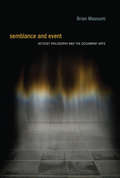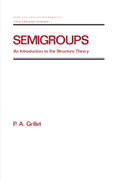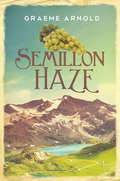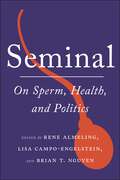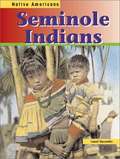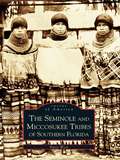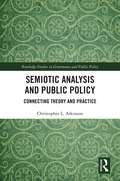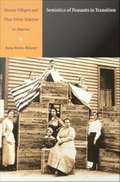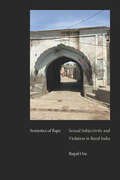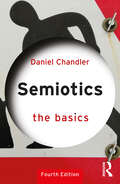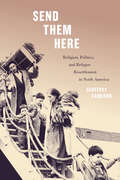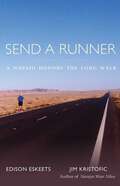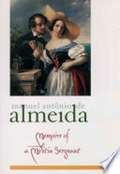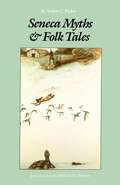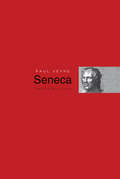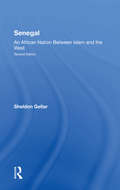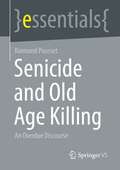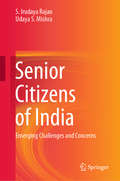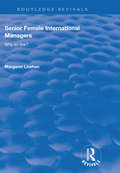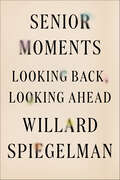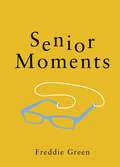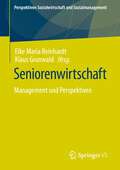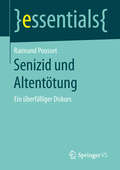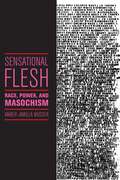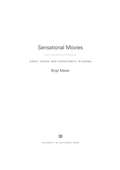- Table View
- List View
Semblance and Event: Activist Philosophy and the Occurrent Arts (Technologies of Lived Abstraction)
by Brian MassumiAn investigation of the “occurrent arts” through the concepts of the “semblance” and “lived abstraction.”Events are always passing; to experience an event is to experience the passing. But how do we perceive an experience that encompasses the just-was and the is-about-to-be as much as what is actually present? In Semblance and Event, Brian Massumi, drawing on the work of William James, Alfred North Whitehead, Gilles Deleuze, and others, develops the concept of “semblance” as a way to approach this question. It is, he argues, a question of abstraction, not as the opposite of the concrete but as a dimension of it: “lived abstraction.” A semblance is a lived abstraction. Massumi uses the category of the semblance to investigate practices of art that are relational and event-oriented—variously known as interactive art, ephemeral art, performance art, art intervention—which he refers to collectively as the “occurrent arts.” Each art practice invents its own kinds of relational events of lived abstraction, to produce a signature species of semblance. The artwork's relational engagement, Massumi continues, gives it a political valence just as necessary and immediate as the aesthetic dimension.
Semigroups: An Introduction to the Structure Theory (Chapman & Hall/CRC Pure and Applied Mathematics)
by Pierre A. GrilletThis work offers concise coverage of the structure theory of semigroups. It examines constructions and descriptions of semigroups and emphasizes finite, commutative, regular and inverse semigroups. Many structure theorems on regular and commutative semigroups are introduced.;College or university bookstores may order five or more copies at a special student price which is available upon request from Marcel Dekker, Inc.
Semillon Haze
by Graeme ArnoldAustinn Baeder arrived in the Port of Geelong in 1845 with his two adult sons to start a new life. The Swiss winemaker planned to open a new vineyard and winery on the banks of the Barwon River. The retired soldier came looking for new opportunities, but to also leave a troubled past behind. Mitchell Baeder, a modern-day descendant of Austinn continues the winemaking tradition on the original property Austinn and his sons established, Cressier. Mitchell is a bit old-fashioned and slow to embrace modern techniques. His son, Adam is a wayward adolescent, and causes Mitchell and his wife Fiona much grief. Adam's on and off relationship with Jenny, a girl from the adjacent winery, has the potential to bring the family together. A series of unfortunate events unwittingly brings the modern day Baeder family far closer to their ancestors than they could ever imagine. It could even expose a dreadful family secret that lay dormant for over 100 years: the true reason behind Austinn's emigration.
Seminal: On Sperm, Health, and Politics (Health, Society, and Inequality)
by Rene Almeling Lisa Campo-Engelstein Brian T. NguyenThe complexities and controversies at the nexus of sperm, health, and politicsIn Seminal, experts from across the social sciences, humanities, law, and medicine offer a kaleidoscopic view of the relationship between sperm, health, and the intersecting politics of gender, race, and reproduction. Always insightful and often provocative, the essays in this unprecedented collection cover a broad range of issues related to male reproductive and sexual health—including the latest technological developments for creating sperm; the specter of eugenics in contemporary medical markets; emerging approaches to male contraceptive methods, male infertility, and trans healthcare; controversies surrounding sperm donors and sperm banking; disparities in sexual health education for teens—all the while attending to the enormous variation in how individuals and societies understand, embody, and experience sperm.At a time when the most basic rights of reproductive autonomy are under severe threat, contributors to this volume argue this is precisely the moment to rethink and reimagine sperm from a variety of medical, political, and cultural perspectives. Ultimately, this volume aims to contribute to a more reproductively just society and broaden conversations around bodies, health and equity in the United States.
Seminole Indians
by Caryn YacowitzFind out how Seminole Indians hunted, fished and farmed. Learn about the kinds of houses they used to live in. Discover the beautiful clothing of the Seminole People. In this book you will learn about the brave leaders of the Seminole people, find out about stickball, a favorite Seminole game, and read about the festivals that Seminoles hold today.
Seminole and Miccosukee Tribes of Southern Florida, The (Images of America)
by Patsy WestThe history of the Seminole and Miccosukee tribes dates back to the 1500s, when most of Florida as well as much of the United States was uninhabited. During the early 19th century, the tribes moved into the South Florida interior, living on remote tree islands throughout the Everglades and Big Cypress Swamp. These self-reliant people kept mostly to themselves. Their struggles have included disease, poverty, relocation, and three wars with the U.S. Army. Nevertheless, these resilient tribes survived and have become a vital part of the country's history and a unique and highly popular feature of South Florida tourism. Today, these tribes are busy creating economic opportunity for members, preserving their heritage and culture, and protecting their homeland. The powerful and engaging story of these remarkable people is brought to life in Images of America: Seminole and Miccosukee Tribes of Southern Florida. Captivating images from the Seminole / Miccosukee Photographic Archive highlight and preserve their story for future generations. Readers will appreciate this up-close and personal look at their way of life. The descendants of famed Native Americans such as Osceola, Jumper, Micanopy, and Sam Jones are seen in this distinct photo perspective working, resting, playing, and celebrating their customs.
Semiotic Analysis and Public Policy: Connecting Theory and Practice (Routledge Studies in Governance and Public Policy)
by Christopher L. AtkinsonSemiotic Analysis and Public Policy evaluates several key areas of public policy that are dependent on narrative, naming, sign, and branding to create meaning. Semiotic analysis, drawing on the work of Saussure, Peirce, and others, allows for creation of a case-oriented model of brand versus product, and of medium compared with message. Using a critical Habermasian lens, Atkinson convincingly exposes approaches focusing too heavily on instrumentality and rhetoric that claims a resolution of complex societal dilemmas. Rooted in the literature on public policy and semiotics, Atkinson creates an opportunity to delve more fully into the creation of narratives and meaning in policy, and the origins and maintenance of public programs. Evaluation of such programs shows various levels of disconnect between popular understanding of public considerations, political outcomes, and what results from the administrative/regulatory process in support of the law. This book will be of interest for scholars and researchers of public policy, policy analysis, public administration, public management, and policy implementation.
Semiotics of Peasants in Transition: Slovene Villagers and Their Ethnic Relatives in America
by Irene Portis-WinnerIn Semiotics of Peasants in Transition Irene Portis-Winner examines the complexities of ethnic identity in a traditional Slovene village with unique ties to an American city. At once an investigation into a particular anthropological situation and a theoretical exploration of the semiotics of ethnic culture--in this case a culture permeated by transnational influences--Semiotics of Peasants in Transition describes the complex relationships that have existed between and among the villagers remaining in Slovenia and those who, throughout the nineteenth and twentieth centuries, emigrated to Cleveland, Ohio. Describing a process of continuous and enduring interaction between these geographically separate communities, Portis-Winner explains how, for instance, financial assistance from the emigrants enabled their Slovenian hometown to survive the economic depressions of the 1890s and 1930s. She also analyzes the extent to which memories, rituals, myths, and traditional activities from Slovenia have sustained their Cleveland relatives. The result is a unique anthropological investigation into the signifying practices of a strongly cohesive--yet geographically split--ethnic group, as well as an illuminating application of semiotic analyses to communities and the complex problems they face.
Semiotics of Rape: Sexual Subjectivity and Violation in Rural India
by Rupal OzaIn Semiotics of Rape, Rupal Oza follows the social life of rape in rural northwest India to reveal how rape is not only a violation of the body but a language through which a range of issues—including caste and gender hierarchies, control over land and labor, and the shape of justice—are contested. Rather than focus on the laws governing rape, Oza closely examines rape charges to show how the victims and survivors of rape reclaim their autonomy by refusing to see themselves as defined entirely by the act of violation. Oza also shows how rape cases become arenas where bureaucrats, village council members, caste communities, and the police debate women’s sexual subjectivities and how those varied understandings impact the status and reputations of individuals and groups. In this way, rape gains meaning beyond the level of the survivor and victim to create a social category. By tracing the shifting meanings of sexual violence and justice, Oza offers insights into the social significance of rape in India and beyond.
Semiotics: The Basics (The Basics)
by Daniel ChandlerThis fourth edition of the bestselling textbook, now available in print, eBook, and audiobook, has been fully updated, continuing to provide a concise introduction to the key concepts of semiotics in accessible and jargon-free language. Demystifying what is a complex, highly interdisciplinary field, key questions covered include: what are signs and codes? What can semiotics teach us about representation and reality? What tools does it offer for analysing texts and cultural practices? The fourth edition of Semiotics: The Basics focuses in particular on its application to communication and cultural studies. It has been extensively revised and extended, with an entirely new section on cognitive semiotics, many more illustrations, and a new glossary. With updates to theory, further examples, and suggestions for review and further reading, this must-have resource is both the ideal introductory text and an essential reference guide for students at all levels of language and communication, media, and cultural studies.
Send Them Here: Religion, Politics, and Refugee Resettlement in North America (McGill-Queen's Refugee and Forced Migration Studies #5)
by Geoffrey CameronThe United States and Canada have historically accepted approximately three-quarters of resettled refugees, leading the world in this key aspect of global refugee protection. Between 1945 and 1980, both countries transformed their previous policies of refugee deterrence into expansive resettlement programs. Explanations for this shift have typically focused on Cold War foreign policy, but there was a domestic force that propelled the rise of resettlement: religious groups.In Send Them Here Geoffrey Cameron explains the genesis and development of refugee resettlement policy in North America through the lens of the essential role played by faith-based organizations. Catholic, Protestant, and Jewish groups led advocacy efforts for refugees after the Second World War, and they cooperated with each other and their respective governments to implement the first formal resettlement programs. Those policy frameworks laid the foundation for diverging policy trajectories in each country, leading ultimately to private sponsorship in Canada and the voluntary agency program in the United States. Religious groups remain embedded in the world’s most successful refugee resettlement programs.Send Them Here draws on a rich archival record and extensive comparative research to contribute new insights to the history of refugee policy, human rights, and the role of religion in modern policymaking and global humanitarian efforts.
Send a Runner: A Navajo Honors the Long Walk
by Jim Kristofic Edison EskeetsThe Navajo tribe, the Diné, are the largest tribe in the United States and live across the American Southwest. But over a century ago, they were nearly wiped out by the Long Walk, a forced removal of most of the Diné people to a military-controlled reservation in New Mexico. The summer of 2018 marked the 150th anniversary of the Navajos' return to their homelands. One Navajo family and their community decided to honor that return. Edison Eskeets and his family organized a ceremonial run from Spider Rock in Canyon de Chelly, Arizona, to Santa Fé, New Mexico, in order to deliver a message and to honor the survivors of the Long Walk.Both exhilarating and punishing, Send A Runner tells the story of a Navajo family using the power of running to honor their ancestors and the power of history to explain why the Long Walk happened. From these forces, they might also seek the vision of how the Diné—their people—will have a future.
Seneca Falls and the Origins of the Women's Rights Movement (Pivotal Moments In American History)
by Sally McMillenIn the quiet town of Seneca Falls, New York, over the course of two days in July, 1848, a small group of women and men, led by Elizabeth Cady Stanton and Lucretia Mott, held a convention that would launch the women's rights movement and change the course of history. In Seneca Falls and the Origins of the Women's Rights Movement, Sally McMillen reveals, for the first time, the full significance of that revolutionary convention and the enormous changes it produced. The book covers 50 years of women's activism, from 1840 to 1890, focusing on four extraordinary figures--Mott, Stanton, Lucy Stone, and Susan B. Anthony. McMillen tells the stories of their lives, how they came to take up the cause of women's rights, the astonishing advances they made during their lifetimes, and the far-reaching effects of the work they did. At the convention they asserted full equality with men, argued for greater legal rights, greater professional and education opportunities, and the right to vote--ideas considered wildly radical at the time. Indeed, looking back at the convention two years later, Anthony called it "the grandest and greatest reform of all time."
Seneca Myths and Folk Tales
by Arthur C. ParkerMyths, legends and folk tales of the Seneca Indians of New York state.
Seneca: The Life of a Stoic
by Paul VeyneFirst published in 2003. Routledge is an imprint of Taylor & Francis, an informa company.
Senegal: An African Nation Between Islam And The West, Second Edition
by Sheldon GellarA West African nation with an extremely rich political and cultural heritage, Senegal continues to serve as a role model for Francophone Africa despite its weak economic base and small population. Senegal's status as both a Sahelian and a maritime country brought its people into early contact with Islam and the West, making the country a crossroads where traditional African, Islamic, and European cultures met and blended. Sheldon Gellar begins his exploration of Senegal by examining the influence of Islam, Western imperialism, and French colonial rule and by tracing the country's political, economic, and social evolution since independence. This expanded second edition also analyses developments since 1983, looking in particular at the state of multiparty democracy, the 1993 national elections, the deterioration of the political climate following the assassination of the vice president of the Constitutional Council, the 1994 devaluation of the CFA franc, and the return of Abdoulaye Wade to the government coalition in 1995. Despite its inability to break out of severe and chronic economic crises, Senegal has managed to solicit high levels of foreign aid and has gained a significant profile on the international scene. Gellar closes with an evaluation of the social and cultural trends that have contributed to Senegal's emergence as one of Africa's most important cultural centers.
Senicide and Old Age Killing: An Overdue Discourse (essentials)
by Raimund PoussetRaimund Pousset gives in this essential a concise account of senicide, the modern form of cultural killing of the elderly. He sheds light on both the history and the current situation of an ancient method. Practiced for millennia almost everywhere in the world, this custom of actively disposing of old 'useless' people or passively putting oneself to death is increasingly being revived today. Senicide is a nameless and silent scandal in our modern, enlightened society. The author wishes to bring this silent death into the focus of a mindful professional public, for the segregation of old age and the avalanche of costs in health care suggest that senicide will continue to grow in sad significance
Senior Citizens of India: Emerging Challenges and Concerns
by Udaya S. Mishra S. Irudaya RajanThis book provides an overview of multiple facets of ageing and its evolving dynamics in various Indian states. It elaborates on key dimensions like health, dependence and disability, as well as living arrangements for the elderly. Drawing on information from National Sample Surveys to offer readers a broader and richer understanding of the evolving demographic reality in India, the book addresses a range of detailed policies and programmes for the elderly in India. Given its scope, the book is essential reading for students and researchers in the fields of sociology, demography, economics and development studies. It also offers a valuable reference guide for anyone engaged in planning and policy formulation for social security, welfare of the aged or mainstreaming ageing concerns.
Senior Female International Managers: Why So Few? (Routledge Revivals)
by Margaret LinehanThis title was first published in 2000: Linehan (management, Cork Institute of Technology) studies 50 European senior female managers in a variety of organizations who have made at least one career move across national borders. She compares the careers of these women with a number of theoretical explanations for the relative dearth of women in these positions. She finds that many of the problems facing domestic female managers also face international managers specifically, assumptions that management skills and organizational commitment are societally associated with masculinity.
Senior Moments: Looking Back, Looking Ahead
by Willard SpiegelmanA moving collection of essays on aging and happinessDrawing on more than six decades' worth of lessons from his storied career as a writer and professor, Willard Spiegelman reflects with candid humor and sophistication on growing old. Senior Moments is a series of discrete essays that, when taken together, constitute the life of a man who, despite Western cultural notions of aging as something to be denied, overcome, and resisted, has continued to relish the simplest of pleasures: reading, looking at art, talking, and indulging in occasional fits of nostalgia while also welcoming what inevitably lies ahead. Spiegelman's expertly crafted book considers, with wisdom and elegance, how to be alert to the joys that brim from unexpected places even as death draws near. Senior Moments is a foray into the felicity and follies that age brings; a consideration of how and what one reads or rereads in late adulthood; the eagerness for, and disappointment in, long-awaited reunions, at which the past comes alive in the present. A clear-eyed book of memories, written in eight searching and courageously honest essays, Senior Moments is guaranteed to stimulate, stir, and restore.
Senior Moments: The Perfect Gift for Those Who Are Getting On a Bit
by Freddie GreenYou know you’re having a senior moment when…… you need a pen and paper just to order a round of drinks.Getting old? Join the club! This upbeat collection of all-too-common mishaps, sprinkled with quotes from wise old sages, will have you nodding in agreement and chuckling at all your lovable foibles.
Seniorenwirtschaft: Management und Perspektiven (Perspektiven Sozialwirtschaft und Sozialmanagement)
by Klaus Grunwald Elke Maria ReinhardtDer Band skizziert Seniorenwirtschaft als einen vielfältigen Bereich des Wirtschaftens, der sich im Kern mit dem Management von Dienst- und Versorgungsleistungen befasst, die für interessierte und bedürftige ältere Menschen und Hochbetagte am Markt angeboten und von ihnen in Anspruch genommen werden. Er fokussiert dabei die Bereiche soziale Dienstleistungen, Wohnen, Betreuung und insbesondere Pflege. Der Sammelband thematisiert die wachsenden Herausforderungen für das Management und gibt einen Einblick in relevante Grundlagen, Konzepte und Methoden des Managements der genannten Bereiche der Seniorenwirtschaft. Im Zentrum steht dabei die Perspektive der verantwortlichen Führungskräfte.
Senizid und Altentötung: Ein überfälliger Diskurs (essentials)
by Raimund PoussetRaimund Pousset gibt in diesem essential eine knappe Darstellung des Senizids, die moderne Form der kulturellen Altentötung. Er beleuchtet sowohl die Geschichte als auch die aktuelle Situation einer uralten Methode. Diese seit Jahrtausenden fast überall auf der Welt praktizierte Sitte, alte ‚nutzlose‘ Menschen aktiv zu beseitigen oder sich passiv selbst zu Tode zu befördern, wird heute zunehmend wiederbelebt. Der Senizid ist in unserer modernen, aufgeklärten Gesellschaft ein namenloser und stiller Skandal. Der Autor möchte diesen stillen Tod in den Fokus einer achtsamen Fachöffentlichkeit stellen, denn die Segregation des Alters und die Kostenlawine im Gesundheitswesen lassen vermuten, dass der Senizid weiter an trauriger Bedeutung gewinnen wird.
Sensational Flesh: Race, Power, and Masochism (Secular Studies #43)
by Amber Jamilla MusserThis &“lively and enlightening contribution to queer studies&” investigates power, race, and gender through the lens of masochism (Darieck Scott, author of Extravagant Abjection). In everyday language, masochism is usually understood as the desire to abdicate control in exchange for sensation—pleasure, pain, or a combination thereof. Yet at its core, masochism is a site where power, bodies, and society come together. Drawing on rich and varied sources—from nineteenth century sexology, psychoanalysis, and critical theory to literary texts and performance art—Amber Jamilla Musser employs masochism as a diagnostic tool for probing relationships between power and subjectivity. Engaging with a range of debates about lesbian S&M, racialization, femininity, and disability, as well as key texts such as Sacher-Masoch&’s Venus in Furs, Pauline Réage&’s The Story of O, and Michel Foucault's History of Sexuality, Musser renders legible the complex ways that masochism has been taken up by queer, feminist, and critical race theories. Furthering queer theory&’s investment in affect and materiality, she proposes &“sensation&” as an analytical tool for illustrating what it feels like to be embedded in structures of domination such as patriarchy, colonialism, and racism—as well as what it means to embody femininity, blackness, and pain. Sensational Flesh is ultimately about how difference is made material through race, gender, and sexuality and how that materiality is experienced.
Sensational Movies
by Birgit MeyerTracing the rise and development of the Ghanaian video film industry between 1985 and 2010, Sensational Movies examines video movies as seismographic devices recording a culture and society in turmoil. This book captures the dynamic process of popular filmmaking in Ghana as a new medium for the imagination and tracks the interlacing of the medium's technological, economic, social, cultural, and religious aspects. Stepping into the void left by the defunct state film industry, video movies negotiate the imaginaries deployed by state cinema on the one hand and Christianity on the other. Birgit Meyer analyzes Ghanaian video as a powerful, sensational form. Colliding with the state film industry's representations of culture, these movies are indebted to religious notions of divination and revelation. Exploring the format of "film as revelation," Meyer unpacks the affinity between cinematic and popular Christian modes of looking and showcases the transgressive potential haunting figurations of the occult. In this brilliant study, Meyer offers a deep, conceptually innovative analysis of the role of visual culture within the politics and aesthetics of religious world making.
